Societies across the world from ancient to modern times have used insects as an art subject. Their shapes and colours have always been inspiration to artists in all fields, whether jewellery or ceramics, body painting or textiles, paintings or sculptures. In certain cultures insects were even turned into sacred symbols. Nowadays, artists and designers concentrate on symbolic nature of insects and the abstract aspects they represent in a poetic way.
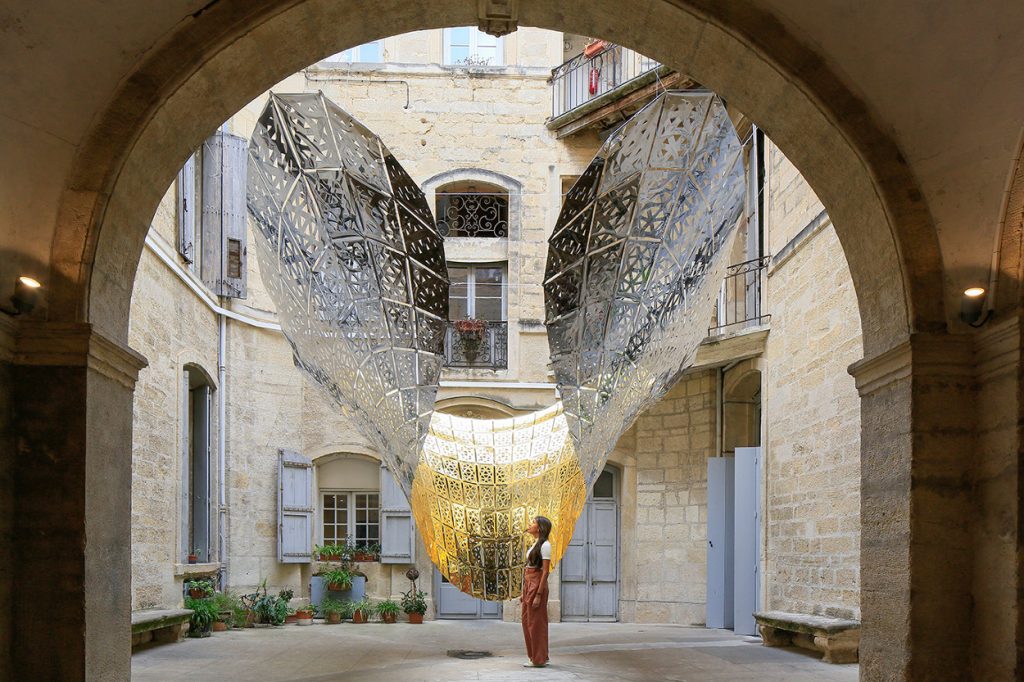
Cristina Nan, Dirce Medina Patatuchi, Carlos Bausa Martinez – an interdisciplinary team of creative minds of multicultural background – have presented their sculptural installation Papillon D’Or (‘Gold Butterfly’) at this year’s FAV Montpellier. This temporary parametric structure takes inspiration from the suspended movement in air of a butterfly and represents the team’s interpretation of beauty. The butterfly here acts as a symbol of freedom and ephemerality as well as lightness and colour.
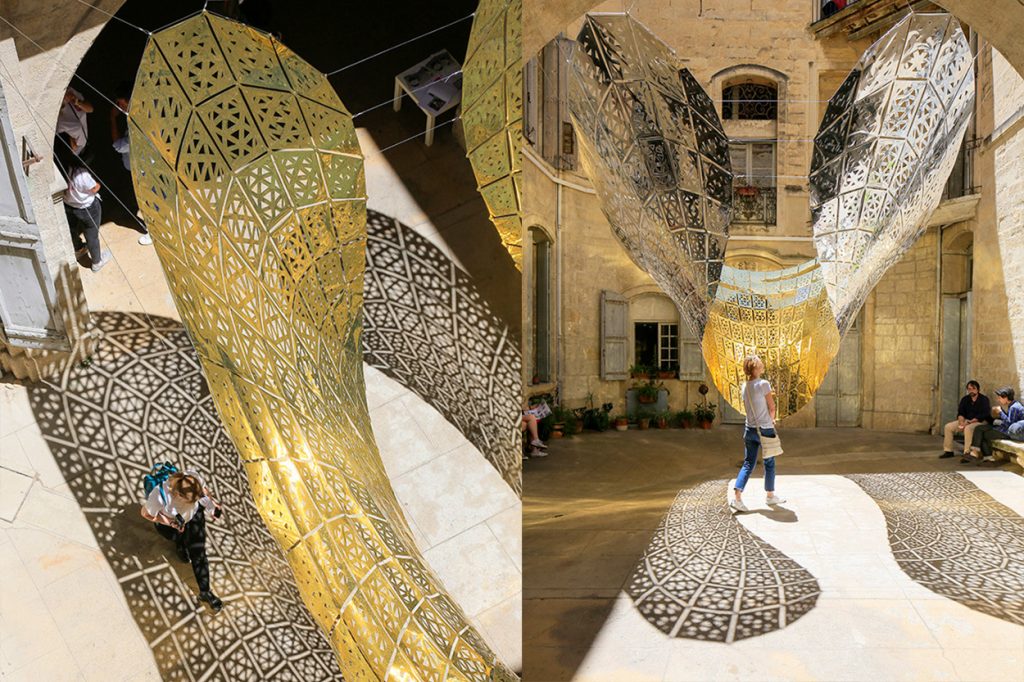
Papilion D’Or installation by Cristina Nan, Dirce Medina Patatuchi, Carlos Bausa (also header image)
The utilized material – golden dichroic, holographic mirror vinyl – refracts light and offers visitors various experiences of the installation in relation to different viewpoints, thus instigating childlike excitement. The computational design of Papilion D’Or transforms and redefines the space of the historic courtyard through constant interplay of light and shadow, while digital fabrication and advanced manufacturing techniques contrast to the environment.
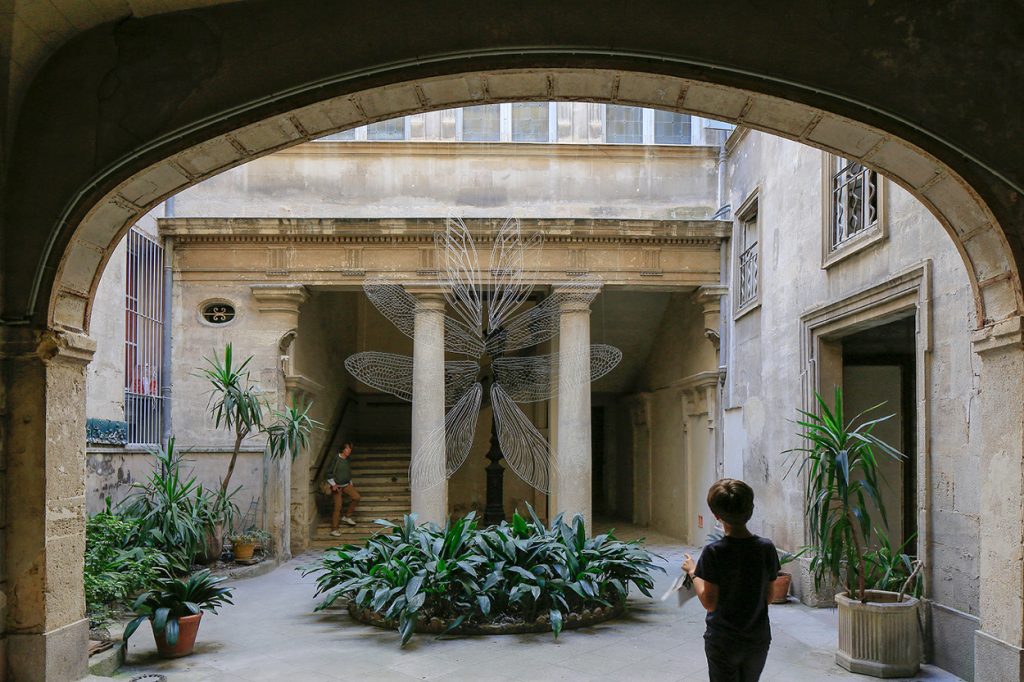
Showcase installation by Lopez Rodriguez Enrique and Berriozabal Armesto Iñigo at FAV Montpellier 2019
Another FAV Motpellier installation exploring the questions of beauty origin is Showcase by the two Spain-born and Amsterdam-based architects Lopez Rodriguez Enrique and Berriozabal Armesto Iñigo. The symmetry, the colors and proportions, the harmony of the waving moves and the fragility of the wings make butterflies and dragonflies some of the most graceful creatures. Using the dragonfly as paradigm of ephemeral beauty which humans imprison in a failed attempt to control it, the artists place the insects, over-scaled and out of context, framed by the courtyard, as if on a science catalogue.

Showcase installation by Lopez Rodriguez Enrique and Berriozabal Armesto Iñigo at FAV Montpellier 2019
Showcase also invites the public to find beauty in the environment that surrounds them. It brings color sifted light to the courtyard creating a new perception of the space and a new way to look at nature.
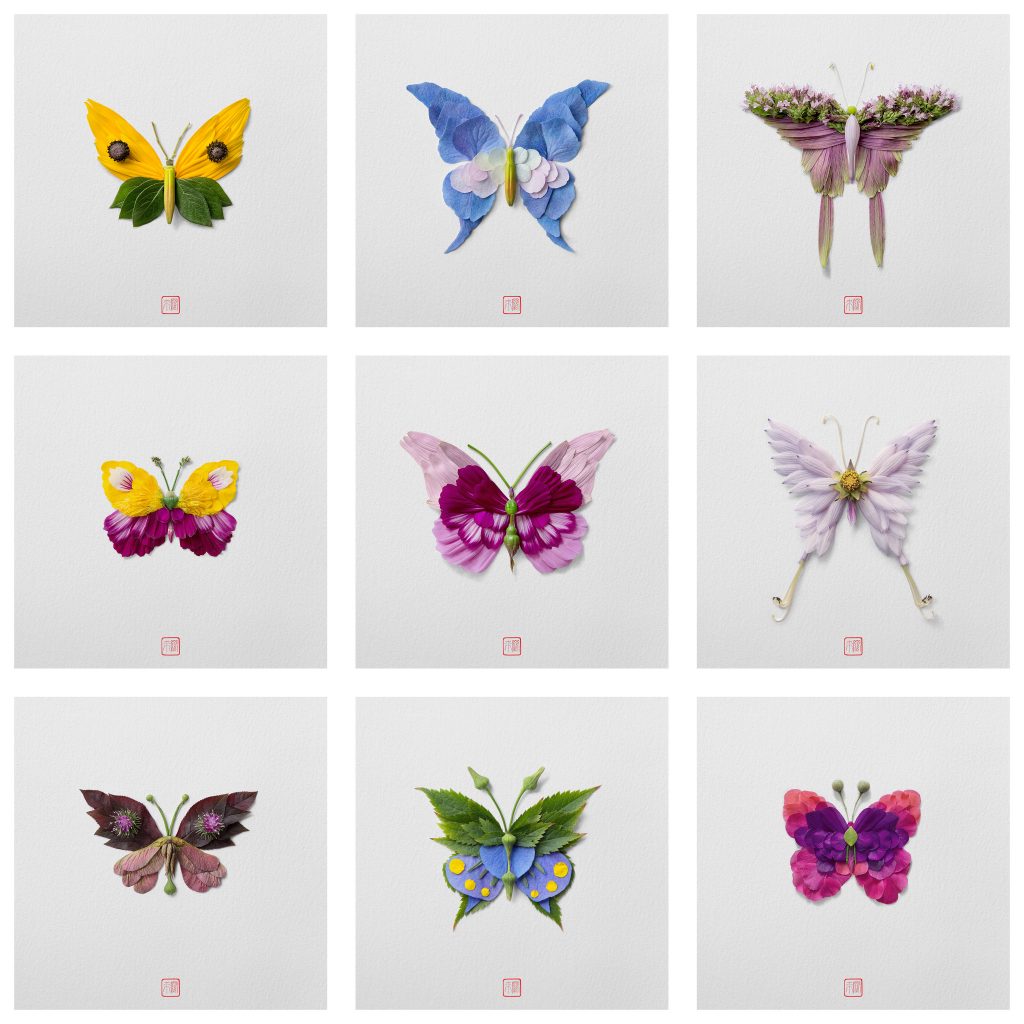
Natura Insects by Raku Inoue
Quite on the contrary, Montreal-based artist Raku Inoue is fascinated with the insect’s physical shape and colours rather than their symbolical meaning , respecting their ephemerality. In his series Natura Insects he uses an assortment of freshly-cut blooms to create colorful insect sculptures.

Natura Insects by Raku Inoue
Each delicately crafted floral arrangement transforms the earthy creatures into ethereal works of art, exhibiting the artist’s creative use of materials and unexpected approach to his subject matter. The materials Inoue used for his works, a lot of them seasonal, were found throughout years and hand-arranged.
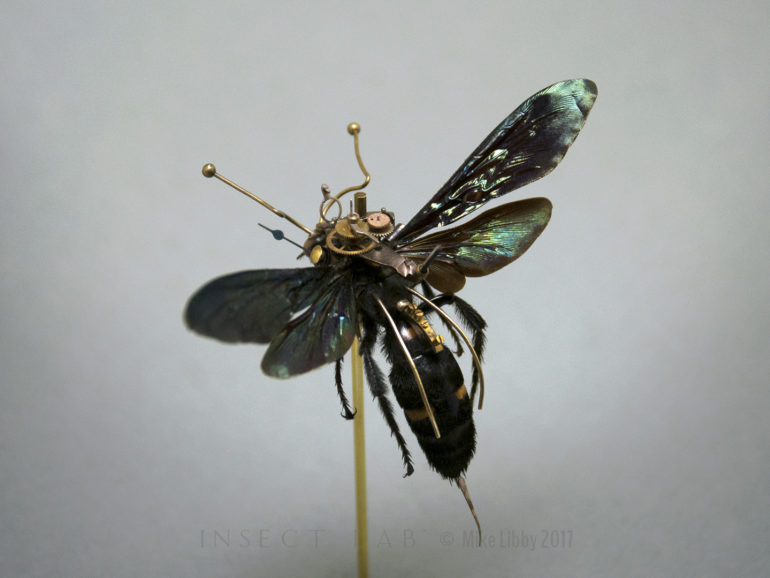
Insect Lab series by Mike Libby
The multi-disciplinary artist Mike Libby who lives and works in South Portland creates sculptural series customizing preserved insect specimens with handmade and mechanical components and hardware from antique watches, sewing machines, old gadgets, lighters, typewriters, etc.
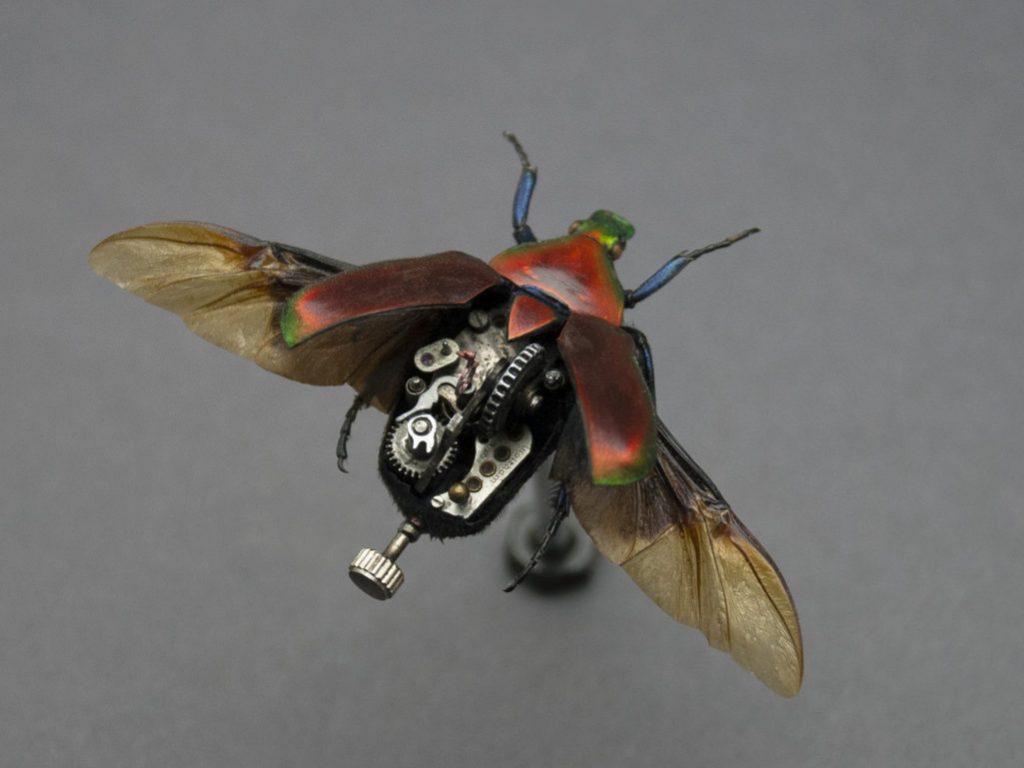
Insect Lab series by Mike Libby
Libby claims that the specimens he uses for his works aren’t endangered or threatened or black market while the details he uses to complement his sculptures do not contain non-degradable plastic. Each handmade piece is a spirited and unique celebration of biology and engineering.